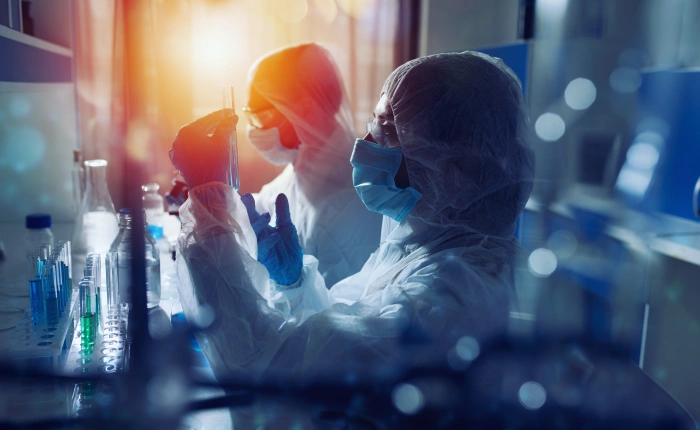There are many potential benefits of peptide therapy in different medical fields. This Cureus article explores the expression of antimicrobial peptides and cytokines in the human omentum following abdominal surgery, with the aim of understanding how these peptides can aid in the prevention of postoperative infections. The article below focuses on the effects of Mechano-Growth Factor (MGF) peptide, which has been shown to have favorable impacts on muscle growth, wound healing, cartilage repair, and brain development in animal studies. MGF peptide has also been shown to activate muscle stem cells and enhance heart health, among other benefits.
There is a growing interest in peptide therapy as a potential solution to various medical problems, from muscle loss to postoperative infections.

Sponsored Content
Cardiological Effects of MGF Peptide
Mechano-Growth Factor (MGF) peptide is a splice variant of insulin-like growth factor [i] that has been demonstrated to have cardiological effects, favorably influencing muscle growth, wound healing, cartilage repair, and brain development in animal studies. MGF C-terminal has been shown to enhance muscle healing after damage and hasten recovery time. Moreover, some evidence is that it helps shield tissues from the mechanical stressors incurred during weight training and jogging, according to research.

Do you have a Ph.D. or MD and need to purchase MGF peptides for your research? You can find high-quality, affordable peptides online.
What is the Mechano Growth Factor?
In contrast to IGF1, the peptide known as Mechano growth factor (MGF) [ii] have a slightly modified sequence. According to studies, it significantly impacts youngsters’ growth and development. There’s more, however.
Animal studies support that MGF peptide may promote tissue repair and development by activating muscle stem cells and increasing protein synthesis for tissue growth. Researchers are now exploring this peptide as a potential therapy for disorders that cause muscle loss and wasting in animals.
Mechanism of Action of the MGF Peptide
According to research, IGF and muscle growth factor (MGF) work together to cause hypertrophy and speed up the healing process after muscle injury. Overtraining the muscle and increasing tissue healing are two ways that MGF shows itself. Muscle satellite cells, also known as stem cells, are activated with their help, per clinical trial results. [v]
The IGF-1Eb isoform, as it’s more often known, protects neurons, mitigates the atrophying effects of insulin, and speeds up the healing of damaged muscle tissue in animals.
Studies in rats have shown the efficacy of this peptide. After muscular damage, high levels of MGF were found in the rats’ muscles, which promoted skeletal muscle cell development. Research on MGF treatment for disorders that cause muscle wasting or tissue damage is limited, but early results are encouraging.
Advantages of MGF Peptides
According to the scientific community’s findings, MGF peptides have a wide range of applications. In a nutshell, here’s what it can do, according to animal studies:
- Encourage the growth of new muscle by stimulating stem cells
- Facilitate healing, repair, and cell division
- Facilitate the reduction of inflammation
- Maximize workouts
- Improve mental well-being and growth
- Enhance heart health
Muscle Growth Factor’s Effects
Recent studies have shown that MGF (Mechanical growth factor) may stimulate satellite cells in the body, leading to increased hypertrophy, larger muscles, and even muscle regeneration. According to animal studies, MGF administered to mice for three weeks resulted in a 25% increase in muscle growth. Researchers think this peptide has the potential to double the health benefits of exercise and cure muscle-wasting disorders.
An animal’s basal metabolic rate and the pace at which it burns calories at rest benefit from muscle gain. Thus the animal may see more than simply an aesthetic advantage from exercising. Animal studies have demonstrated that increased lean body mass helps alleviate various diseases and health problems linked to obesity.
Transplantation of myogenic precursor cells enhances dystrophin expression, which may explain why MGF therapy is effective in the context of some muscle-wasting illnesses like Duchenne muscular dystrophy (DMD). As a result, the negative consequences of these states are mitigated.
Despite the treatment’s encouraging name, post-transplant survival statistics are dismal. Animal studies suggest that C-terminal peptide may improve transplant outcomes by increasing the number of myogenic precursor cells that survive the procedure.
Results of MGF on Injury Repair
Injuries, inflammatory diseases like arthritis, and overuse of joints may all lead to cartilage breakdown. Experts agree that poor blood flow and a lack of stem cells prevent cartilage from regenerating properly. Yet, research on MGF peptides in animals showed that they might assist in overcoming many of the obstacles to cartilage regeneration.
Research indicates that C-terminal [iii] MGF helps chondrocytes (cells that promote cartilage health and repair) endure exposure to noxious stimuli, including damage and physical stress. By increasing cell survival, MGF supplementation aids in protecting and repairing cartilage when mechanical stress is applied, as per studies.
Rodent studies showed that MGF peptide might stop disc degeneration by stopping cell apoptosis. [iv]
Cardiological Consequences
Evidence from animal trials of acute myocardial infarction in sheep suggests that MGF peptide therapy may prevent heart muscle damage caused by ischemia. Researchers also found that cardiomyocyte damage was reduced by 35% when MGF peptide was administered.
Effects on Neuronal Health
In 2010, scientists proved that MGF peptide was present in the brains of rats, proving the medication’s potent neuroprotective properties. Research in mice further indicates that MGF protein is expressed in the context of brain hypoxia and that it may protect neurons.

Studies show that treatment with MGF peptide relieves the increasing muscular weakness seen in Lou Gehrig’s disease (ALS) and slows down the underlying cause of the illness, the degeneration of motor neurons.
Researchers have observed that Mechano-growth factor peptide protects neurons from disease progression more effectively than any other isoform. It may also aid in the recovery of brain tissue damaged by ischemia. Scientists have high hopes that MGF peptide, with further study, may prove to be therapeutic that can save motor neurons from dying.
References
[i] Philippou A, Papageorgiou E, Bogdanis G, Halapas A, Sourla A, Maridaki M, Pissimissis N, Koutsilieris M. Expression of IGF-1 isoforms after exercise-induced muscle damage in humans: characterization of the MGF E peptide actions in vitro. In Vivo. 2009 Jul-Aug;23(4):567-75. https://pubmed.ncbi.nlm.nih.gov/19567392/
[ii] Moriggl, R, V Gouilleux-Gruart, R Jähne, S Berchtold, C Gartmicen, X Liu, L Hennighausen, A Sotiropoulos, B Groner, and F Gouilleux. “Deletion of the Carboxyl-Terminal Transactivation Domain of MGF-Stat5 Results in Sustained DNA Binding and a Dominant Negative Phenotype.” Molecular and Cellular Biology 16, no. 10 (October 1996): 5691–5700. doi:10.1128/mcb.16.10.5691.
[iii] Esposito, Simone, Koen Deventer, and Peter Van Eenoo. “Characterization and Identification of a C-Terminal Amidated Mechano Growth Factor (MGF) Analogue in Black Market Products.” Rapid Communications in Mass Spectrometry 26, no. 6 (February 10, 2012): 686–692. doi:10.1002/rcm.6144.
[iv] Liu X, Zeng Z, Zhao L, Chen P, Xiao W. Impaired Skeletal Muscle Regeneration Induced by Macrophage Depletion Could Be Partly Ameliorated by MGF Injection. Front Physiol. 2019 May 17;10:601. https://pubmed.ncbi.nlm.nih.gov/31164836/
[v] Mills P, Dominique JC, Lafrenière JF, Bouchentouf M, Tremblay JP. A synthetic mechano growth factor E Peptide enhances myogenic precursor cell transplantation success. Am J Transplant. 2007 Oct;7(10):2247-59. https://pubmed.ncbi.nlm.nih.gov/17845560/
Editor’s Note: This blog post was sponsored by Core Peptides LLC.





